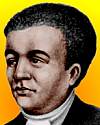
On 9 Nov 1731, Benjamin Banneker was born, a Black-American astronomer, inventor and mathematician. A biography of Benjamin Banneker appears in Men of Mark (1887), which begins with him growing up in a poor family, but already an intelligent student. In 1770 he made a clock. His interests turned to astronomy, and he could calculate when the sun or moon should be eclipsed, and at what time every star would rise. There is a copy of an intriguing mathematical question propounded by Banneker concerning the dimensions of a wine vessel of unspecified shape, given by its proportions and volume. If you fancy yourself as having a skill in mathematics, it's a puzzle you should enjoy trying to solve, as you read more about his skills and achievements.
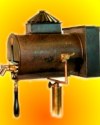
On 9 Nov 1825, Thomas Drummond made the first practical use of limelight. No, not for the theatrical stage. It was to enable work through misty days and night while surveying in Ireland. If you didn't know how limelight got its start, read this extract about Drummond's Heliostat and the Drummond Light from Memoir of Thomas Drummond (1867). He invented created an intense light from a lump of lime (calcium oxide) heated to incandescent by an oxygenated alcohol flame in front of a reflector.

On 9 Nov 1934, Carl Sagan was born, an American astronomer, exobiologist, author and popularizer of science. He is perhaps the best-known scientist on the planet through Cosmos, the first science television blockbuster science series. In his Cosmos, he energetically blends science and philosophy tracing modern knowledge and scientific methods from their historical roots. If you have not seen or read Sagan's irresistible work, it is such a classic that remains in print. You may wish to splurge on the video set and view all the episodes again. Long after his death, they remain his signature achievement. Today's book pick is: Cosmos, by Carl Sagan. If you do not already have this classic on your bookshelf, you may wish to buy a copy, to read and reflect on his thoughtful words again.
It is available from Amazon, typically about New from $39.99. Used from $0.25. (As of earlier time of writing - subject to change.)
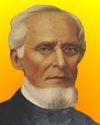 | I tried and failed. I tried again and again and succeeded. [Epitaph from Gail Borden's gravestone.] |
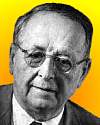 | Before you generalize, formalize, and axiomatize there must be mathematical substance. |
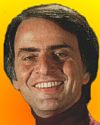 | We are a way for the cosmos to know itself. |
| Before you look at today's web page, see if you can answer some of these questions about the events that happened on this day. Some of the names are very familiar. Others will likely stump you. Tickle your curiosity with these questions, then check your answers on today's web page. | |
| Births | |
 | On 9 Nov 1934, Carl Sagan was born, an American astronomer and exobiologist, who was also a science writer, and studied such diverse aspects of the solar system as the conditions of planetary surfaces, their atmospheres and the possibility of extraterrestrial life. He is fondly remembered for his visionary public TV series, Cosmos. Can you add one word to complete his much-used quote: “We are star ...” |
 | On 9 Nov 1801, Gail Borden was born, an American manufacturer of food products. He created a meat biscuit from flour and meat extracts capable of long-term storage. His company's name is still on the labels of food products today. What is Borden's most famous food processing invention, which solved in its time a significant problem of shipping and storage? |
| Deaths | |
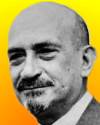 | Chaim Weizmann (1874-1952) was a Russian-British-Israeli chemist who used bacteria for the synthesis of organic chemicals. During WW I, a recent immigrant into Great Britain, he discovered a way to use a bacterium to synthesize acetone during the fermentation of grain. Acetone was important in the manufacture of cordite for explosives. Weizmann was active in politics leading to the establishment of Israel (1948). What political position did this research scientist hold in Israel? |
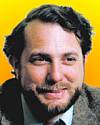 | Stephen Benton (1941-2003) is a scientist who said his fascination with optical phenomena began with the 3-D glasses he used as an 11-year-old to watch the 1953 “3-D” movie House of Wax. His name is not well-known, but his 1968 invention is in most adults' wallet or purse in America, and around the world. What example of Benton's invention are you likely to have in your wallet or purse? |
| Events | |
 | On 9 Nov of a certain year, the first successful test flight of a Saturn V rocket took place. What was the decade of this event? |
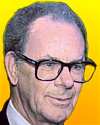 | In 1957, Gordon Gould began to write down the principles of what he called a laser in his notebook during a sleepless Saturday night. What do the initials in the acronym “laser” stand for? |
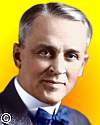 | On 9 Nov of a certain year, the confirmation of highly-penetrating extra-terrestrial radiation was announced to the National Academy of Sciences in Madison, Wisconsin by Robert A. Millikan, calling them “cosmic rays.” In what decade was this discovery made? |
Fast answers for the previous newsletter for November 8: Hermann Rorschach • 76 years • Titusville, Pennsylvania • infinity • astatine • Wilhelm Röntgen.
 If you enjoy this newsletter, the website, or wish to offer encouragement or ideas, please send feedback by using your mail reader Reply button.
If you enjoy this newsletter, the website, or wish to offer encouragement or ideas, please send feedback by using your mail reader Reply button. Your click on a Facebook, StumbleUpon, or other social button on the site webpages is also a welcome sign of appreciation. Thank you for using them.
© This newsletter is copyright 2020 by todayinsci.com. Please respect the Webmaster's wishes and do not put copies online of the Newsletter — or any Today in Science History webpage. (If you already have done so, please remove them. Thank you.) Offline use in education is encouraged such as a printout on a bulletin board, or projected for classroom viewing. Online, descriptive links to our pages are welcomed, as these will provide a reader with the most recent revisions, additions and/or corrections of a webpage. For any other copyright questions, please contact the Webmaster by using your mail reader Reply button.
--
If you do not want to receive any more newsletters, Unsubscribe
To update your preferences and to unsubscribe visit this link
Executive Real Estate Business Class
-
"It was like a man with wings. It wasn't like anything you'd see on TV or in a monster movie." ...
About the publisher
Search This Blog
Blog Archive
-
▼
2020
(1542)
-
▼
November
(164)
- Last day to save! Take advantage of Black Friday d...
- On This Day for November 30 - Independence of Barb...
- Newsletter for Monday 30 November.
- November 30: Cnut the Great, the 1st State to Abol...
- FAMILY: Happiness in a stressful season
- Medieval monarchs | WW1 quiz | Marlborough pie recipe
- On This Day for November 29 - United Nations resol...
- Newsletter for Sunday 29 November.
- November 29: Edison's Phonograph, Schrödinger's Ca...
- The Compass: Italy
- See the past through a different lens with Nat Geo...
- On This Day for November 28 - Opening of Tehrān Co...
- Newsletter for Saturday 28 November.
- November 28: Exploration, Invention and a Day of F...
- PHOTOGRAPHY: How adversity inspired discovery for ...
- The gift of curiosity lasts a lifetime. Give Nat G...
- Very Weird — And Very Real — Facts About The Victo...
- Black Friday Deals: Save 50% on a Britannica Membe...
- Black Friday Savings at the HISTORY Store
- On This Day for November 27 - Nobel Prizes establi...
- Newsletter for Friday 27 November.
- November 27: The Model Parliament, the 1st Native ...
- ANIMALS: The pets I’m thankful for
- A Very Special Thanksgiving Edition Of Our Newsletter
- On This Day for November 26 - Premiere of Casablan...
- Newsletter for Thursday 26 November.
- YOUR WEEKLY ESCAPE: They live in a legendary under...
- November 26: 1st National Thanksgiving, Alice in W...
- SCIENCE: The prehistoric truth about turkeys
- UPDATED: Every Membership Now 50% Off!
- Every Membership Now 50% Off!
- Demystified: Is the Ozone Layer Finally Healing It...
- On This Day for November 25 - Japanese military ba...
- Newsletter for Wednesday 25 November.
- November 25: Dynamite and The Mousetrap
- TRAVEL: Keeping your family safe over the holidays
- Meet The Real-Life "Dexter" — Serial Killer Of Mur...
- On This Day for November 24 - Dutch discovery of T...
- Newsletter for Tuesday 24 November.
- November 24: 1st Transit of Venus Observed, Van Di...
- HISTORY: The faces of COVID-19’s toll
- New This Week on History News Network
- On This Day for November 23 - Ley Juárez passed, I...
- Newsletter for Monday 23 November.
- November 23: On This Day in History
- FAMILY: Keeping the holidays familiar for your kids
- The many faces of Anne Boleyn | Take our Tudors qu...
- On This Day for November 22 - U.S. President John ...
- Newsletter for Sunday 22 November.
- November 22: Vasco da Gama Rounds the Cape and JFK...
- The Compass: Hawaii
- On This Day for November 21 - Signing of Mayflower...
- Newsletter for Saturday 21 November.
- November 21: The Mayflower Compact, a Jewish state...
- CORONAVIRUS UPDATE: 200,000 new cases in a single day
- PHOTOGRAPHY: Switching tactics to chronicle the wo...
- How The Kennedy Curse Has Tormented America's Firs...
- On This Day for November 20 - Mexican Revolution l...
- The Roundup Top Ten for November 20, 2020
- Newsletter for Friday 20 November.
- November 20: Uyghurs Conquer China, the Napoleonic...
- ANIMALS: The deadly thing about snakes
- Give your kids a love of learning with Nat Geo Kid...
- #1 Gift for Families this Holiday - On Sale Now!
- On This Day for November 19 - Anwar Sadat's visit ...
- Newsletter for Thursday 19 November.
- November 19: "Four Score and Seven Years Ago..."
- YOUR WEEKLY ESCAPE: Not all of the dinosaurs died
- SCIENCE: Can we make North America’s greatest reso...
- The Latest News from History News Network
- On This Day for November 18 - Jonestown massacre, ...
- Newsletter for Wednesday 18 November.
- November 18: St. Peter's Basilica is Consecrated a...
- TRAVEL: Best of the World 2021
- Black Friday Early Access! 50% off Holiday Bundles...
- Photographer Captures the Impacts of Climate Chang...
- On This Day for November 17 - Arnold Schwarzenegge...
- Newsletter for Tuesday 17 November.
- November 17: On This Day in History
- HISTORY: Thanksgiving in tough times
- New This Week on History News Network
- On This Day for November 16 - Election of Bhutto a...
- Newsletter for Monday 16 November.
- November 16: Francisco Pizarro Ambushes Atahualpa,...
- FAMILY: Keeping kids kind during this stressful time
- The Crown S4 | Henry VIII's seventh wife | Vikings...
- On This Day for November 15 - Palestinian statehoo...
- Newsletter for Sunday 15 November.
- November 15: The Scramble for Africa and the Vietn...
- The Compass: Peru
- On This Day for November 14 - Eritrea made a provi...
- Newsletter for Saturday 14 November.
- CORONAVIRUS UPDATE: The U.S. enters uncharted terr...
- November 14: Kirch's Comet, Einstein's Theory of L...
- PHOTOGRAPHY: In the land of Arctic dreams
- The Unhinged Soldier Who Avenged Lincoln's Assassi...
- The Roundup Top Ten for November 13, 2020
- On This Day for November 13 - Terrorist attacks in...
- Newsletter for Friday 13 November.
- ANIMALS: Images to surprise and delight during thi...
-
▼
November
(164)
-
Blogroll
-
About
HistoryFact










0 comments:
Post a Comment